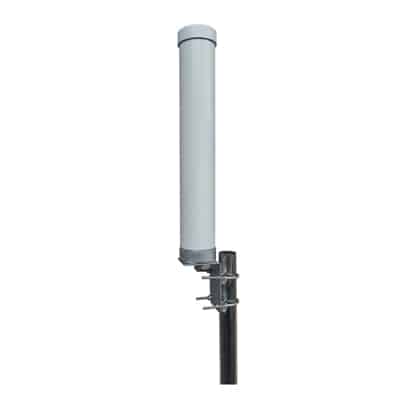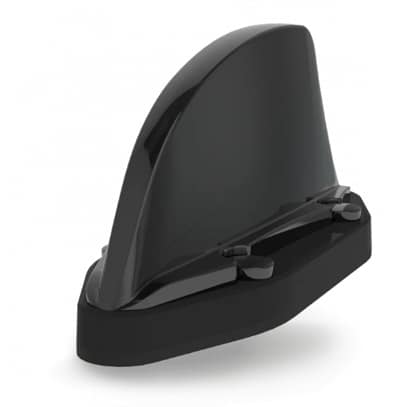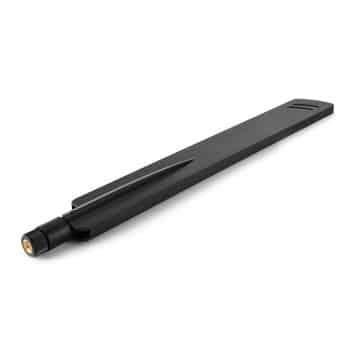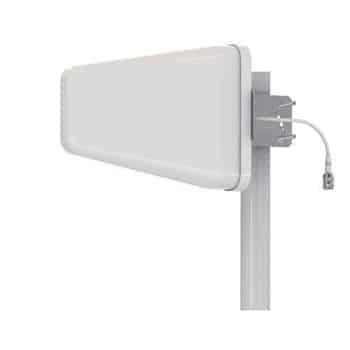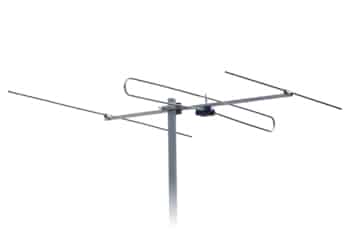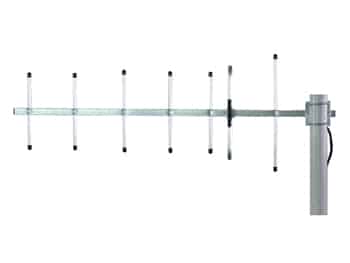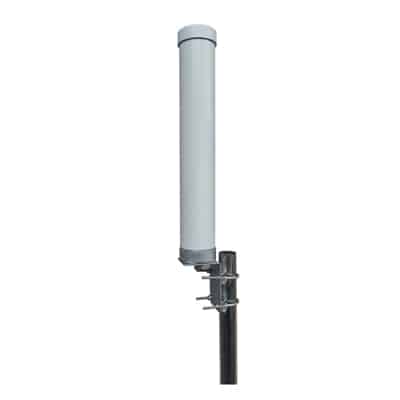
In today’s fast-moving world, almost all aspects of life rely heavily on staying connected. Reliable and efficient communication is vital in personal life as well as professional life for everyone. 4G network is crucial and still a key player in telecommunication even with the evolution in the digital world with 5G and beyond networks. 4G LTE antennas are the main component in 4G networks, facilitating high-speed internet and efficient telecommunication. They can establish communication with enhanced signal strength and speed, especially with the use of technologies like Multiple Input Multiple Output (MIMO).
This article will provide an overview of 4G LTE antennas discussing the different types of 4G LTE antennas available in the market today, their operating frequencies, and their importance in satisfying modern communication requirements. The article will also briefly discuss the points to consider when selecting a 4G LTE antenna for a specific application.
Table of Contents
ToggleIntroduction to 4G LTE Antennas
4G stands for the fourth generation of mobile telecommunications technology. The launch of the fourth generation of wireless mobile communication technology was a significant leap forward from 3G. 4G networks were able to provide faster data transmission speeds, improved network connectivity and reliability, reduced latency, and enhanced voice and video calling capabilities compared to previous generations. 4G networks have improved network capacity, making them highly effective even in densely populated areas, allowing a large number of users to connect simultaneously without compromising on network performance. Thus, 4G networks facilitate high speed, quality, and reliable connectivity which is crucial in modern communication systems.
4G technology offers significant improvements over previous technologies, delivering download rates of up to 100 Mbps and upload rates of up to 50 Mbps. This enables high-speed internet access required for applications such as video streaming, mobile gaming, and internet browsing with minimal lag or buffering. 4G LTE technology significantly reduced network latency, enabling effective use in real-time applications such as VoIP calls, video conferencing, and online gaming. These improvements in speed and latency were also crucial for IoT applications such as home automation, wearables, and mobile payments that relied on fast and stable network connectivity. While 5G and beyond technologies are available in some parts of the world, 4G LTE technology still remains important in many industries and regions. In environments where 5G is not yet fully implemented, 4G LTE still remains a stable and reliable option for an efficient way to connect mobile devices, real-time systems, video streaming, and IoT applications.
A 4G LTE antenna is an antenna designed to receive and transmit signals for 4G wireless networks by connecting devices such as smartphones, tablets, and modems to the internet using a cellular network. The 4G LTE antennas play a major role in 4G systems to ensure a stable and strong signal connection for optimal performance. 4G LTE antennas have the ability to improve the signal strength and quality significantly. This facilitates high speeds, better coverage, reduced latency, and stable performance in 4G networks. 4G antennas also have the ability to extend the range of the device, thus making it possible to receive and transmit signals even at longer distances away from the cell towers. This can be extremely useful in areas that have fewer cell towers and network infrastructure such as rural areas. 4G LTE antennas can be the solution for stable and speed connectivity in such areas. Even with the evolution of technologies beyond 4G, 4G LTE networks still take up a significant percentage of networks across the world. The right 4G LTE antenna can drastically improve the performance of a user’s device and enhance the overall internet and communication experience for the user.
Frequency Range of 4G LTE Antennas
4G antennas are used across a wide range of frequency bands from 700 MHz to 2600 MHz worldwide. The operating frequency range of a 4G LTE antenna is a crucial factor in determining the antenna’s coverage area, signal quality, and overall performance. The specific 4G LTE frequency bands available for the antennas to operate in varies and depends on the region as well as the network provider. The frequency range of 4G LTE antennas is generally divided into a few commonly used frequency bands as mentioned below.
- 700 MHz (Band 12/13/17)
- 800 MHz (Band 20)
- 900 MHz (Band 8)
- 1800 MHz (Band 3)
- 2100 MHz (Band 1)
- 2600 MHz (Band 7)
Types of 4G LTE Antennas
- Yagi antenna
Yagi antennas are directional antennas that are generally used for point to point communication applications. They consist of a driven element, directing elements on either side of a boom-like structure, and a reflector. The signal from the driving element is reflected and it is propagated forward towards the targeted direction by the antenna elements on the sides of the central boom structure. 4G LTE Yagi antennas usually have a high gain and a good range, however, they might be slightly too bulky for certain applications.
- Panel antenna
Panel antennas are directional antennas typically consisting of a dipole placed in front of a flat-panel reflector. This design is effective for enhancing signal strength and directivity since the flat large surface area provides high gain and allows for a focused beam of signal. This helps in reducing interference and thus improves the overall performance and range. 4G LTE panel antennas are ideal for point to point communication systems such as in wireless backhaul links as well as in point to multipoint systems such as wireless access points.
- Parabolic antenna
Parabolic antennas are highly directional antennas. When signals are received on the parabolic surface, they are reflected toward the focal point of the antenna providing a highly focused beam of signals. The high gain and directivity of parabolic antennas makes them ideal for long distance communication. Parabolic 4G LTE antennas are also mainly used for point-to-point applications.
- Ceiling mounting antenna
Ceiling mount antennas are omnidirectional antennas that are installed on the ceiling typically for communication systems inside buildings. Their 360 degrees coverage makes them ideal devices to provide consistent and reliable signal distribution throughout a building or in a large open area.
- Log periodic antenna
Log periodic antennas are directional, multi-element antennas that are slightly similar to Yagi antennas. They consist of multiple dipole elements of different lengths, arranged in a specific pattern. This design enables them to operate across a wide range of frequencies and makes them a robust and flexible solution for most applications.
- Outdoor fiberglass antenna
These antennas, as the name suggests, are made of fiberglass material and are designed for outdoor applications. They are omnidirectional antennas and can provide stable connectivity even with changing environmental conditions due to their design and structure. 4G LTE fiberglass antennas are extremely beneficial for many applications since they are corrosion resistant, waterproof, strong and are generally easy to install.
- Rubber duck antenna
Rubber duck antennas are monopole antennas that are enclosed in a flexible and protective rubber like material. Their compact size and flexibility make them ideal for even portable applications. Rubber duck 4G LTE antennas are durable, comparatively less expensive, and quite easy to install.
- Magnetic mount antenna
Magnetic mount antennas are omnidirectional antennas that have a strong magnet as their base. They can be easily installed on metallic surfaces and are ideal for mobile applications such as to be mounted on vehicles.
- Puck antenna
Puck antennas are omnidirectional antennas that can work across a wide range of frequencies. Their compact design and durable and waterproof construction make them a versatile antenna option. 4G LTE puck antennas are ideal for high speed mobile broadband connectivity. They are used commonly in IoT applications and machine-to-machine systems.
Directional vs Omnidirectional 4G Antenna
Directional 4G LTE antennas focus their signals in one direction during transmission and reception. Omnidirectional antennas focus their signals equally in all directions. Since omnidirectional antennas can receive and transmit signals in all directions, they have the ability to maintain a stable connection throughout by communicating with a different base station in times of congestion. When the base station using a directional antenna that becomes congested or faulty, the antenna’s performance will be significantly impacted. Hence, in terms of stability, an omni directional 4G antenna might be a better choice, however, the distance and range that omnidirectional 4G antennas can effectively transfer signals is lower since it is split up into all directions. Since the signals are focused in one direction, directional antennas are able to transmit and receive signals over a long distance in that direction. Just like an omnidirectional antenna being able to radiate across all directions, it will also be subject to interference from all directions which is not desirable.
The overall gain of a 4G omnidirectional antenna is lower than that of a directional antenna and hence have a lower peak throughput. Considering the installation and maintenance, an omnidirectional antenna is much easier to set up compared to a directional antenna, as it does not require precise placement or alignment. Overall, if the base station is nearby and signals can be sufficiently received, an omnidirectional 4G antenna can be a better choice and when the signals are scarce and the base station is far away, it is better to have a directional antenna targeted in the direction of the base station, such that it will be able to communicate more effectively with its high directivity and gain.
Outdoor vs Indoor 4G Antenna
When selecting a 4G LTE antenna, an important consideration is whether to pick an indoor or outdoor antenna for the practical need. Indoor antennas, as the name suggests, are designed specifically for indoor use. They can broadcast signals inside a building and are used widely in many industries. They are used in businesses and office buildings to facilitate internal communication such as for mobile devices, laptops, televisions etc. They are also used to enable credit/debit card payment usage in applications such as vending machines and kiosks. 4G LTE indoor antennas are also heavily utilized in most modern IoT applications that are used with the smart cities and smart buildings concepts. Outdoor 4G antennas are specifically designed for external applications. They are able to withstand outdoor environmental conditions as well as more interference from other surrounding devices and obstructions. They are mostly used in industries like public safety, on vehicles like trains for transportation, IoT devices in smart city space, etc.
External vs Internal 4G Antenna
Internal 4G antennas are integrated into the device itself. They are located inside the device and are usually not visible to the user. External 4G antennas are separate from the device and mounted outside of the communicating device. Internal 4G LTE antennas are generally smaller as they need to be fitted inside a device. However, due to this, they require precise designing and testing in order to reach the required performance level of the antenna. External 4G LTE antennas minimize development time and testing processes as they are generally user-friendly, plug-and-play solutions that can be implemented comparatively easily. Internal 4G LTE antennas are generally used in applications like smartphones, wearable devices, laptops, smart home devices, etc. while external 4G LTE antennas are preferred for applications like routers, remote sensors, repeaters, etc.
How to Choose the Right 4G Antenna for Your Application?
Choosing the most suitable 4G LTE antenna can make a significant difference in the performance of a device. There are multiple factors that need to be considered when selecting a 4G LTE antenna.
Firstly, it is crucial to check and confirm the compatibility of the device with the antenna. It is also critical to ensure that the selected 4G LTE antenna supports the frequencies used by the network carrier. For high quality connectivity, it is necessary to have a 4G LTE antenna with high gain. Especially in rural areas, the higher the gain, the better will be the quality of the connectivity. The gain of the antenna determines its signal amplification and directivity, affecting its ability to transmit signals over long distances. It is also important to take into consideration the polarization of the antenna. A 4G LTE antenna that is able to adjust vertically and horizontally is ideal for applications that might require adjustments based on signal conditions. As discussed above, 4G LTE antennas are available specifically for indoor and outdoor as well as external and internal types. When deciding on the type of antenna to use, it is vital to be considerate of the environmental conditions such as strong winds. Another crucial factor that will decide the performance level of a 4G LTE antenna is the placement and installation of the antenna.
Some other factors to consider are the height of the antenna, distance between other antennas, line-of-sight and interferences from other devices. Selecting the most suitable antenna and placing it in the optimal location and position will optimize the performance of the antenna.
Conclusion
4G LTE technology brought significant upgrades in terms of speed and bandwidth from the previous third-generation networks. 4G still remains a vital part of communication networks in most parts of the world and works parallelly with 5G and beyond technologies. 4G LTE antennas play a major role in transmitting and receiving signals effectively in systems, and they are available in different types operating across 700 MHz to 2600 MHz frequency bands. They can be either directional or omnidirectional, internal or external, and could be built specifically for either indoor or outdoor use. Proper analysis and understanding of 4G LTE antennas will enable the users to select the most suitable antenna for their application.

